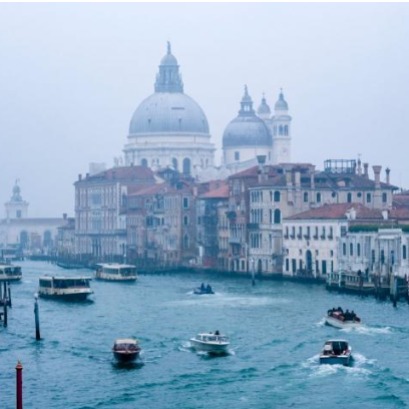
We have found the oldest fossil forest on Earth: Tipa de protárboles
Researchers from Cardiff and Cambridge universities found the oldest fossil forest in Great Britain in Britain. Until before this discovery, that title belonged to the remains of another forest found in New York in 2019, which dates back to around 386 million years. This, discovered in 2024, is four million years older.
The Britain forest dates from approximately 390 million years ago, that is, it lived during the average devonic. En dicho periodo la vida comenzó a expandirse hacia la tierra, y al final del mismo aparecieron las primeras plantas con semilla y los primeros animales terrestres. The first trees of which you have a record were also emerged. That was the oldest forest of the worldly fossilized trees, known as Calamophyton, were discovered on the southern shore of the Bristol Canal, near Minehead. At first glance they resemble palm trees, but they are thinner and hollow prototers. Their penacho cups have sheets without leaves. These trees fulfilled the function of bio -minorphic agents during the devonic. Los investigadores creen que había una conexión entre los entornos marinos y de la superficie.La gran abundancia de escombros arrojados por los Calamophyton se acumuló dentro de capas de sedimento. This sediment affected the way in which the rivers ran through the landscape, being the first time that the course of the rivers could be affected in this way, the scientists explained in a statement from the University of Cambridge. Underground, the researchers assumed that this section of the English coast did not contain fossils of important plants. The finding of this fossilized forest showed that the first trees helped shape the landscapes and stabilize the banks of rivers and coasts hundreds of millions of years. The period of devonic fish was a geological period, part of the Paleozoic era, which covered almost 600 million years. During this time, the weather on Earth was warm and humid as a result of the oceans, whose temperature was higher than the current one. Due to the proliferation of life in the seas, it is known as the period of the fish. According to National Geographic, during that time, Godwanas supercontinent moved away from the South Pole and began to go to the north. This is how a second Supercontinent began to be created: Lausaria, formed after the meeting of North America, North Europe, Russia and Greenland.
IT MAY INTEREST YOU
 An inverted forest of millions of trees has held Venice for more than 1600 years
An inverted forest of millions of trees has held Venice for more than 1600 years
It is an millenary engineering work. For more than 1,600 years, Venice remains firm thanks to a unique foundation system in the world. These are millions of wooden posts stuck with the tip down in the muddy background of the lagoon. This base, which looks like an inverted forest, is composed of aler, oak, aliso, pine, fir and elmo. Thanks to this millenary engineering work, the city was officially founded on March 25, 421. Taking advantage of the laws of physics, monumental buildings have been built on land that seemed unstable. Only Rialtos bridge rests on 14,000 piles, while the Basilica of San Marcos sits over 10,000 oaks. No one knows how many wooden posts there are in total under the entire city, but the Venetian foundations have more than 16 centuries fulfilling their function, unlike modern materials such as concrete or steel, which have a projected life of 50 years on average as according to Alexander Puzrin, professor of geomechanics and geosystem engineering at the Federal Polytechnic University of Zúric.
 SISINTA: The digital map that transforms the knowledge of soils into a key tool for production
SISINTA: The digital map that transforms the knowledge of soils into a key tool for production
The Inta Soil Institute launched the Soil Information System (SISINTA), a platform that integrates more than 7,000 georeferenced soil profiles from all regions of the country. This digital, free and free access tool allows producers, technicians and decision makers to access precise and updated information on the characteristics and aptitudes of the soil in each territory.
 Business, innovation and content for the furniture industry in Fimma Brazil 2025
Business, innovation and content for the furniture industry in Fimma Brazil 2025
The fair will have more than 300 national and international brands, an immersion in innovation and a broader space for architects and carpenters.





















